Chances are you're spending a good amount of your time indoors, and based on the fact that both YouTube and Netflix had to cut their stream quality to keep up with demand, it seems like a lot of that time is being spent watching videos online. Given that then it seems like now is a perfect time to investigate Nvidia claims about last year's new shield TV, because it has an awesome feature called AI upscaling which, Nvidia claims, can take lower quality content let's say 1080p and with the power of machine learning, upscale said content to look like native 4k.
Both, the shield TV and shield TV pro featuring videos updated Tegra x1 plus 16 nanometer processor, a fully fledged Android TV experience and support for 4k HDR video across, basically, every platform you can imagine. Along with CEC control on supportive devices, meaning that you can use your TV remote to control it.
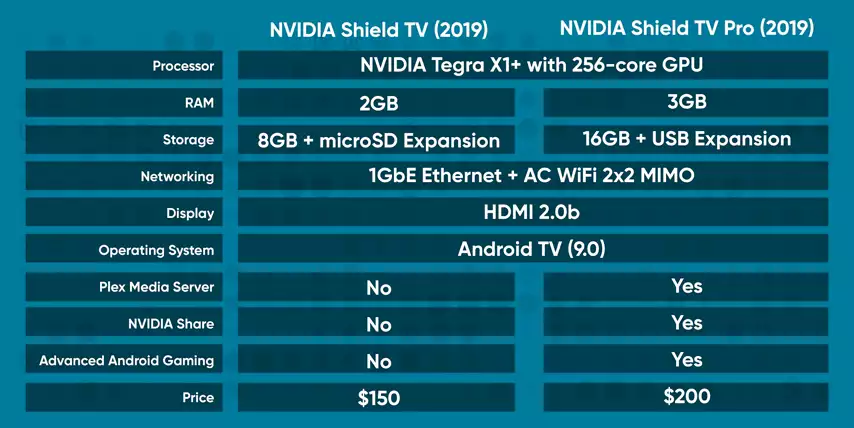 Other than looks, the only difference between the two of them is their RAM and storage configs, along with support for running a Plex Media Server, which is kind of like your own self hosted private Netflix and support for Nvidia share, for capturing gameplay and streaming to twitch. It's also worth noting that the decreased RAM on the base model Shield, means that it's unable to play some of the Triple A games, which were ported over to Android, which Nvidia had dubbed advanced Android gaming.
Other than looks, the only difference between the two of them is their RAM and storage configs, along with support for running a Plex Media Server, which is kind of like your own self hosted private Netflix and support for Nvidia share, for capturing gameplay and streaming to twitch. It's also worth noting that the decreased RAM on the base model Shield, means that it's unable to play some of the Triple A games, which were ported over to Android, which Nvidia had dubbed advanced Android gaming.
On the subject of gaming, you might have noticed the lack of a shield game controller and the seemingly downgraded specs. The biggest reason for it seems to be that this time around Nvidia is back to pushing the Android TV aspect of the shield, with gaming falling to quite literally the 13th section on the product page, remember guys this is a product from Nvidia. I guess it kind of makes sense though, I mean I already have a switch and the gaming PC so for me my shield is a streaming device first and a game console two or three times a year when family comes over. This shift also makes it more price competitive without affecting the user experience much since why would you use this one basically any Bluetooth controller that you already own is gonna work just fine with a shield. So with that in mind the focus of our review is going to be around media streaming.
Starting with the remote. 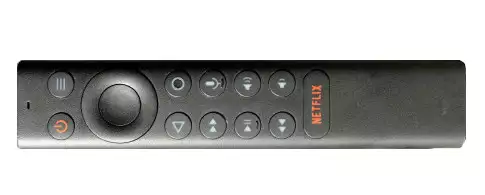 I cannot say that I've seen a remote quite like this one before bit heavier than your average remote, but I will say the triangular feel does give it a surprisingly comfortable hand feel. The buttons feel pretty nice actually, and thanks to the inclusion of an accelerometer the remote can actually sense when you pick it up and turn on the adjustable backlighting.
I cannot say that I've seen a remote quite like this one before bit heavier than your average remote, but I will say the triangular feel does give it a surprisingly comfortable hand feel. The buttons feel pretty nice actually, and thanks to the inclusion of an accelerometer the remote can actually sense when you pick it up and turn on the adjustable backlighting.
The rest of the design is real nothing special, honestly, aside from the gigantic Netflix button on the bottom, which honestly, I found kind of annoying, because it's so easy to accidentally press. The good news is that you can use the button remap app to change what any of these buttons do. There's also a buzzer inside the remote to make it easier to find, in case you lose it. Every remote should have this feature.
Once it's on, the setup procedure is brain-dead easy. Pair your Android phone or iPhone, sign your life away a few times and get greeted by the Android TV home screen with recommended content using from every one of its pores. Honestly, that's about my only complaint about Android TV and then by extension the shield experience, it's a little pushy.
Now we can finally take a look at what might be the coolest feature of this device. Nvidia proprietary AI upscaling uses a combination of traditional upscaling, where the image is simply stretched to fit the resolution, combined with the power of a highly trained neural network to provide an experience that's close to if you were actually watching content that's native to whatever resolution you're upscaling to, in my case that's 4K.
Conveniently in video actually provides a handy-dandy little pot key that you can press to see a side-by-side of what Basic vs. AI enhanced upscaling looks like 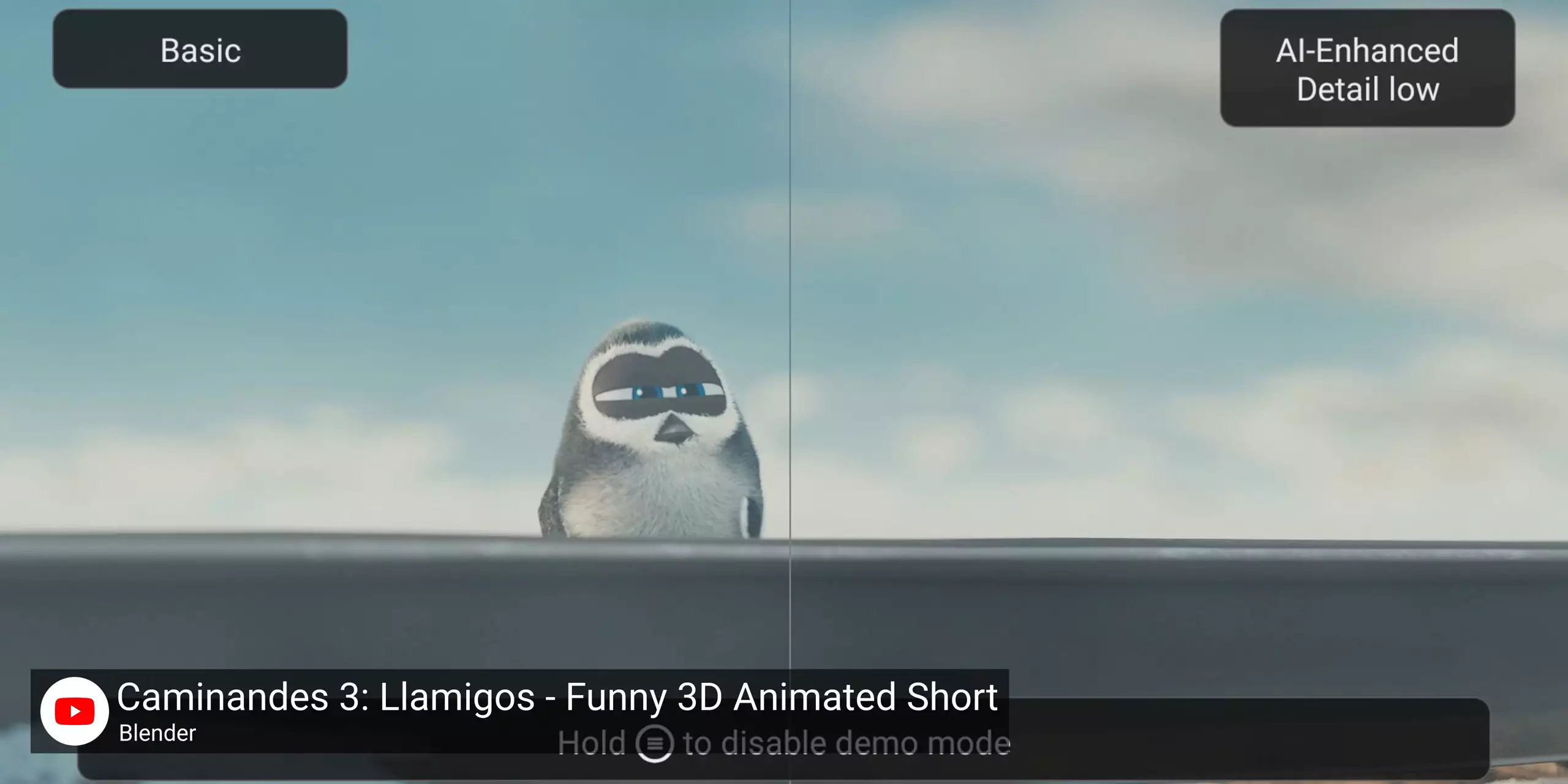 There're certain things that I would say, do not work as well. You end up with a little bit of weird shimmering and background focus sometimes.
There're certain things that I would say, do not work as well. You end up with a little bit of weird shimmering and background focus sometimes.  But textures, the way they manage to improve, especially things like hair and environmental textures is absolutely mind-blowing. There's a little bit that we're gonna look at later, that's quite impressive.
But textures, the way they manage to improve, especially things like hair and environmental textures is absolutely mind-blowing. There's a little bit that we're gonna look at later, that's quite impressive.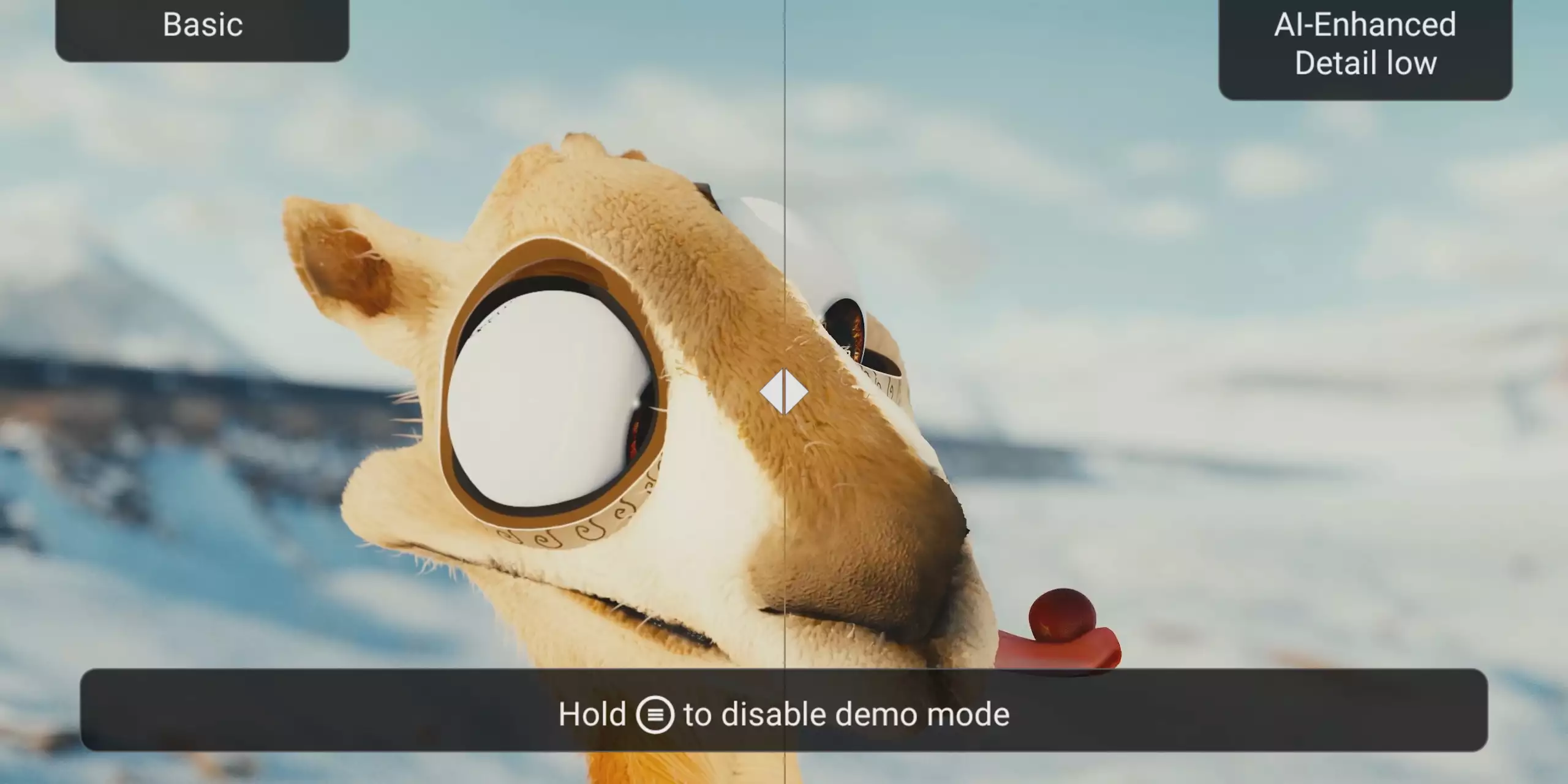
 A little bit less so on him, just he's so close that there's not a lot of extra detail to pull out of it, but this wood here
A little bit less so on him, just he's so close that there's not a lot of extra detail to pull out of it, but this wood here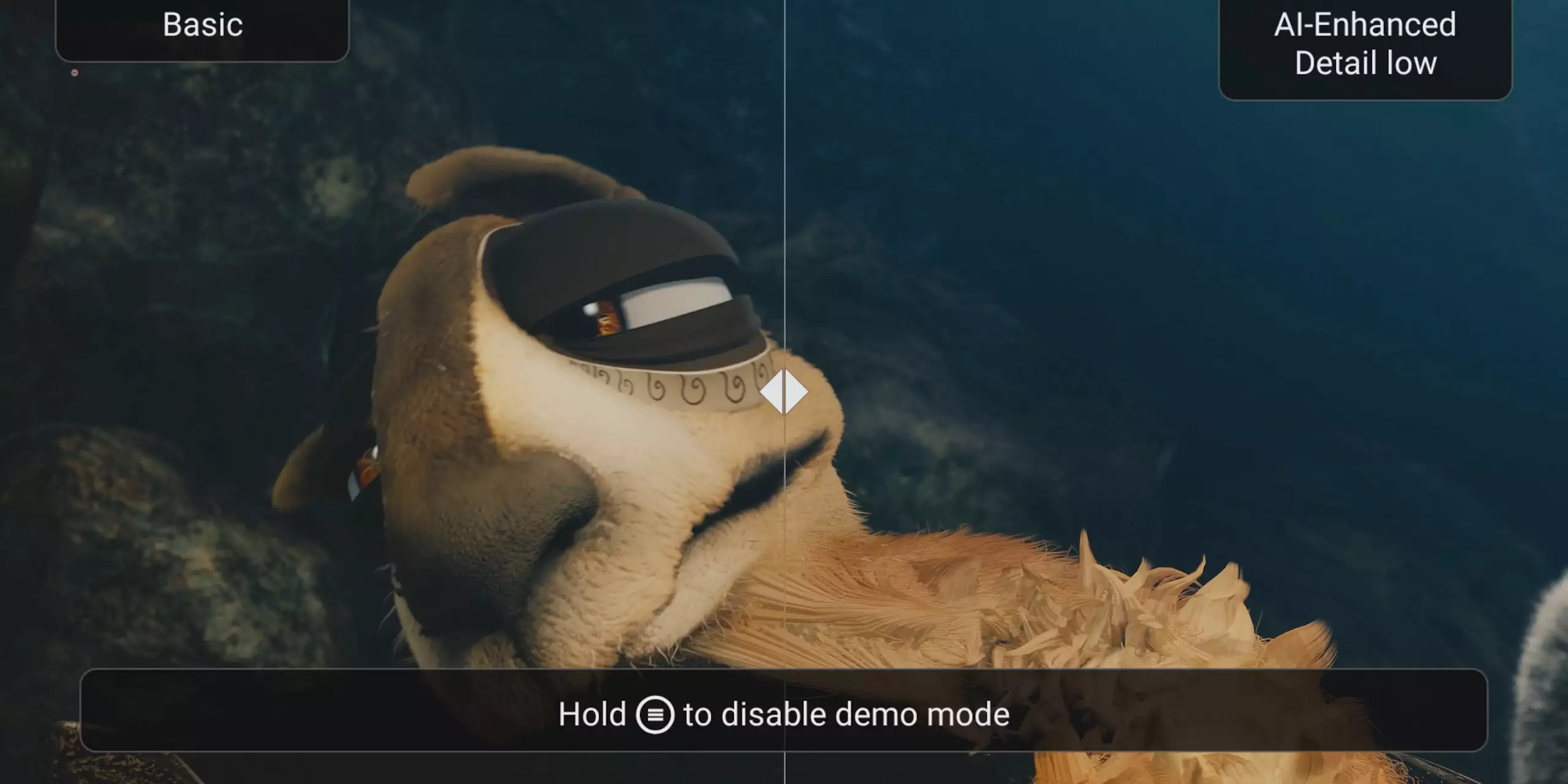 is pretty impressive too.
is pretty impressive too.
This is way more than just a sharpening filter. Look at that wood, stone, hair.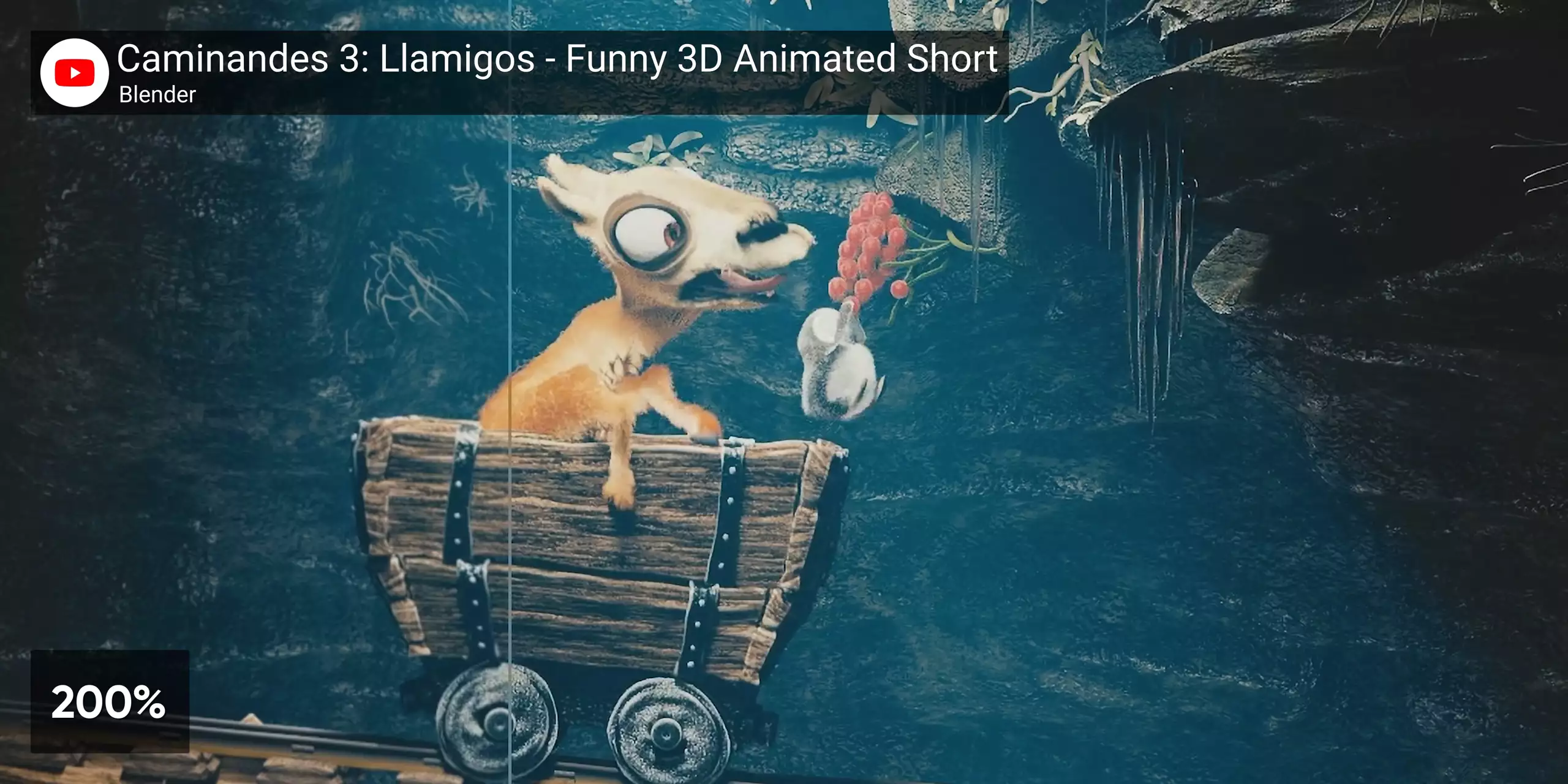 Actually these little berries here, look markedly better with the AI upscaling versus without.
Actually these little berries here, look markedly better with the AI upscaling versus without.
In live-action the effect is definitely more subtle, but it's noticeable. A lot of the same things that were better in the animation are also better here. It's not overdone though that's the problem with a cheap, like I guess, non-ai upscaling is that it tends to just kind of sharpen everything, whereas here you can really tell that it's being applied strategically, it only sharpens what you need to sharpen. That's the detail that really stands out to the eye when you're sitting back at couch distance.
A lot of the same things that were better in the animation are also better here. It's not overdone though that's the problem with a cheap, like I guess, non-ai upscaling is that it tends to just kind of sharpen everything, whereas here you can really tell that it's being applied strategically, it only sharpens what you need to sharpen. That's the detail that really stands out to the eye when you're sitting back at couch distance.
I don't know what else to say other than that Nvidia's new AI upscaling tech is not just another silly marketing gimmick with AI slapped on it. It really does work and I guess that's just kind of the theme.
Why would you spend $200 on a shield they just work. Once you clean up the home screen and get your apps installed its just kind of flawless experience, it updates automatically, it's easy for less tech literate people to use, because they don't have to learn how to cast from their phone.
Probably the biggest standout is that the issues with old Chromecast or Xbox One or actually I've had these issues with my PC before to where certain video codecs will just buffer for no reason or content will be slow to initially load, the shield TVs have had five years to get to the point where they're just freaking work.
NVIDIA has got support nailed down for pretty much every streaming service and video codecs that you can think of, and for a media streaming box I really don't think there's much more that we can ask for. So if you're in the market for something of this nature and you've got the extra cash to spend compared to a Roku or a Chromecast a shield TV is highly recommended.
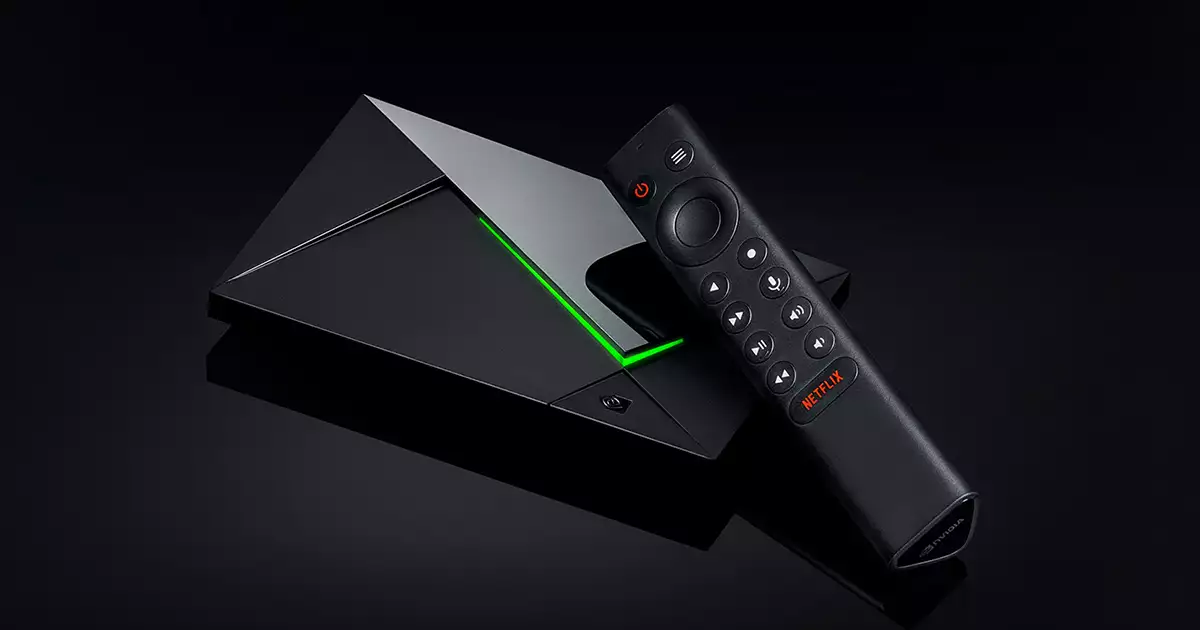

No comments yet